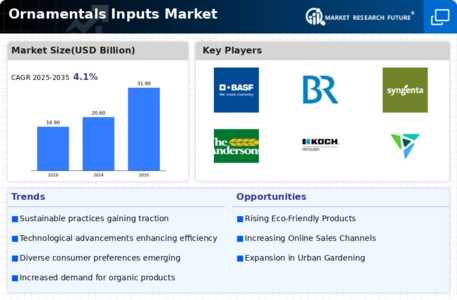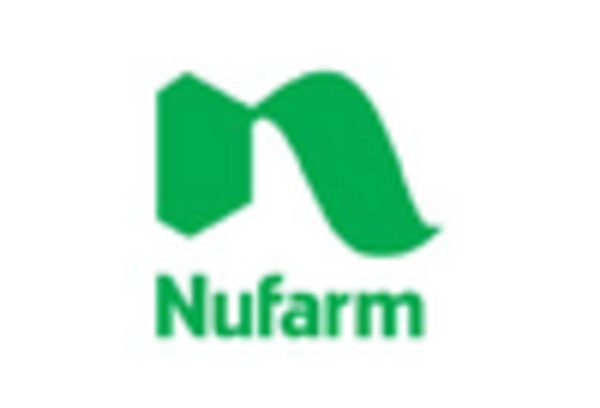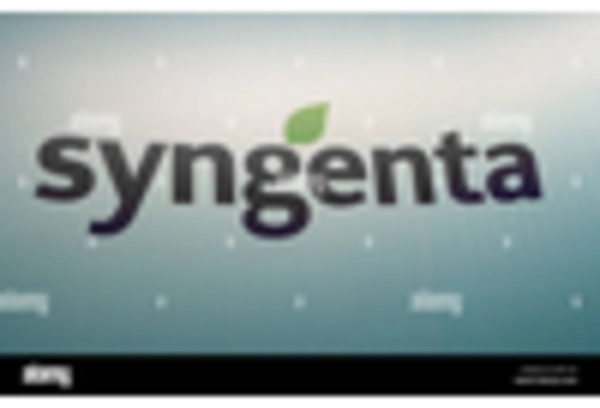Sustainability Initiatives
Sustainability has emerged as a pivotal driver within the Ornamentals Inputs Market, as consumers and businesses alike prioritize eco-friendly practices. The demand for sustainably sourced ornamental inputs is on the rise, with many consumers seeking products that align with their environmental values. This shift is reflected in the increasing number of certifications for sustainable horticultural practices. Furthermore, the market is witnessing a growing trend towards organic fertilizers and pest control solutions, which are perceived as safer alternatives. As of 2025, it is estimated that the market for organic ornamental inputs could account for nearly 30% of total sales, indicating a significant shift towards environmentally responsible choices. This trend not only enhances the appeal of ornamental plants but also supports the broader movement towards sustainability in horticulture.
Urbanization and Green Spaces
The rapid pace of urbanization is significantly influencing the Ornamentals Inputs Market, as cities increasingly recognize the importance of green spaces. Urban planners are incorporating more parks, gardens, and green roofs into city designs, which in turn drives demand for ornamental plants and inputs. This trend is supported by research indicating that urban green spaces can improve air quality and enhance residents' well-being. As cities expand, the need for aesthetically pleasing and functional green areas becomes paramount. Consequently, the Ornamentals Inputs Market is likely to benefit from this urban shift, with projections suggesting a 10% increase in ornamental plant sales in urban areas by 2027. This growth presents opportunities for suppliers to innovate and cater to the unique needs of urban environments.
Rising Demand for Ornamental Plants
The Ornamentals Inputs Market is experiencing a notable increase in demand for ornamental plants, driven by a growing interest in landscaping and gardening. This trend is particularly evident in urban areas, where limited space has led to innovative gardening solutions. According to recent data, the market for ornamental plants is projected to reach USD 50 billion by 2026, reflecting a compound annual growth rate of approximately 5%. This surge in demand is influenced by consumers' desire for aesthetic enhancement in residential and commercial spaces, as well as the increasing popularity of indoor plants. As a result, suppliers in the Ornamentals Inputs Market are adapting their offerings to meet this evolving consumer preference, focusing on diverse plant varieties and sustainable sourcing practices.
Consumer Trends Towards Home Gardening
The Ornamentals Inputs Market is witnessing a shift in consumer behavior, with an increasing number of individuals engaging in home gardening. This trend is fueled by a desire for self-sufficiency, as well as the therapeutic benefits associated with gardening. Recent surveys indicate that nearly 60% of households are now involved in some form of gardening, leading to a surge in demand for ornamental inputs such as seeds, fertilizers, and tools. This growing interest in home gardening is expected to drive the market, with estimates suggesting a potential growth rate of 7% annually over the next five years. As consumers seek to beautify their living spaces and cultivate their own plants, the Ornamentals Inputs Market is poised to capitalize on this burgeoning trend.
Technological Innovations in Horticulture
Technological advancements are reshaping the Ornamentals Inputs Market, introducing innovative solutions that enhance plant growth and care. The integration of smart technologies, such as automated irrigation systems and precision agriculture tools, is becoming increasingly prevalent. These technologies enable growers to optimize resource use, reduce waste, and improve overall plant health. For instance, the use of sensors and data analytics allows for real-time monitoring of soil conditions, leading to more informed decision-making. As a result, the Ornamentals Inputs Market is likely to see a rise in productivity and efficiency, with some estimates suggesting a potential increase in yield by up to 20% in the coming years. This technological evolution not only benefits growers but also contributes to the sustainability of ornamental horticulture.


















Leave a Comment